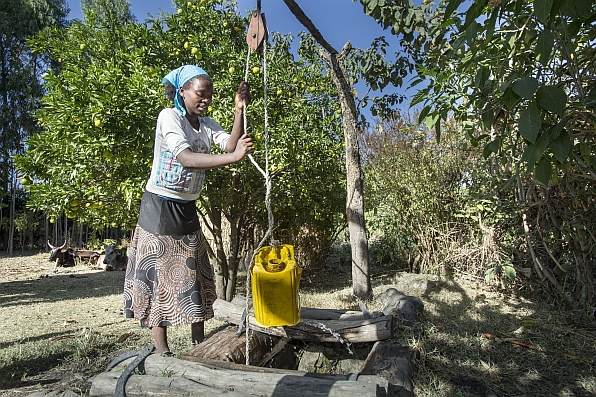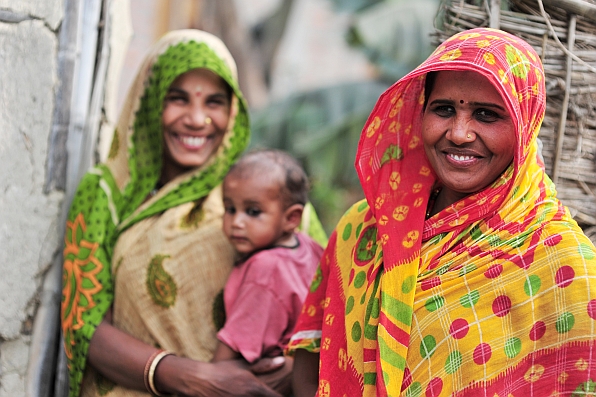Revealing hidden truths about women, water and agriculture
In preparing to celebrate International Women’s Day this year, we asked our researchers at the International Water Management Institute (IWMI) to share brief messages describing what kinds of action they think can make the world of work more inclusive and gender equal. We posed a similar question to IWMI researchers working specifically on gender in water management but asking them to share recent reports or presentations that demonstrate such action concretely.
A common thread in the responses we received is that to achieve meaningful progress requires setting aside simplistic assumptions about women, water and agriculture to reveal hidden truths that provide a more solid basis for action.
Following are two examples – with contrasting macro and micro perspectives – of what this means in practice.
Lifting the roof of rural households
Nearly four decades after United Nations approval of the Convention on the Elimination of all Forms of Discrimination against Women, many prerequisites for achieving gender equality in water management are finally starting to converge. This is the message of a chapter on gender and water prepared recently by IWMI scientist Barbara van Koppen for The Oxford Handbook of Water Politics and Policy.
The Sustainable Development Goals, with their emphasis on gender equality and clean water (SDGs 5 and 6, respectively) send the right signal, and this is reinforced by multiple declarations affirming the right of the poor to water as well as the importance of gender in water management. Positive signals in the global policy sphere, van Koppen explains, run parallel with important changes in development practice. For example, a new approach to providing “multiple-use water services” (applied so far in 22 countries) fosters community engagement and bridges the artificial divide between domestic and productive water uses.

Bringing these changes to fruition, however, says van Koppen, will require a committed effort to replace the persistent ideology of rural males as breadwinners and females as housewives (which rarely matches the empirical evidence) with a very different vision of gender-equal households using water for diverse purposes. One necessary step to this end, she suggests, is to “lift the roof of rural households” (a phrase borrowed from the United Nations World Water Assessment Programme), revealing gendered realities that are instructive and perhaps surprising.
Colonial powers imposed the breadwinner-housewife ideology in Africa (as part of a new hierarchy for control), van Koppen explains, and then it was perpetuated by post-independence governments. Water development projects, for example, targeted “male heads of households” in providing support such as credit and title to irrigated land. Even in the 1990s, by which time gender equality in water management had become an explicit development goal, initiatives inadvertently left the breadwinner-housewife ideology in place – for example, by focusing more on gender in water for sanitation and hygiene than on water for productive purposes like irrigation and aquaculture.
Water deals or “grabs” emerging in the wake of the 2008 food price crisis have heightened gender concerns by favoring male elite minorities “to the detriment of many marginalized men and women.” Rural households that are gender equal, says van Koppen, stand a better chance of negotiating favorable deals with investors and governments that protect local resource rights.
Gender myths and realities
Offering an insider’s view of a recent water security project in Western Nepal, IWMI scientists Floriane Clement and Emma Karki take a critical look at seemingly watertight tenets of gender-sensitive development. The message of their study (to be published as a chapter in a forthcoming book titled Water Security across the Gender Divide) is that, if such projects are to find effective ways of empowering rural women, they must go beyond simplistic assumptions, which create the risk that project interventions reinforce rather than reduce gender inequity.

One “popular storyline” is that reducing the amount of time women spend fetching water will free them to pursue productive activities. To “unpack” this and related assumptions, Clement and Klarki consider how they actually played out in the complex setting of a project whose purpose was to improve access to water for multiple uses, including women’s production of vegetables for local markets.
Because rural households in the project site are scattered over a wide area, improved water access was unequal from the start, bypassing less influential households, especially those of landless men and women. Moreover, women reported that time “saved” from fetching water went mainly to household chores, since daughters-in-law had only limited influence over the allocation of their time. While selling vegetables did translate into empowerment for some women, for others it merely meant making an “arduous journey for a meagre income.”
To create a more nuanced understanding of women’s empowerment, the authors say, project planners need to examine closely the local context, paying particular attention to the unequal power relationships in households, communities and development projects. For this purpose, it makes sense to involve both women and men, making it possible to reflect on and challenge gender norms. Such an approach is particularly important today in Western Nepal, as large numbers of men leave in search of work abroad. The resulting changes in gender and other social relationships have profound implications for land use and access to water, creating both challenges and opportunities for rural women.

